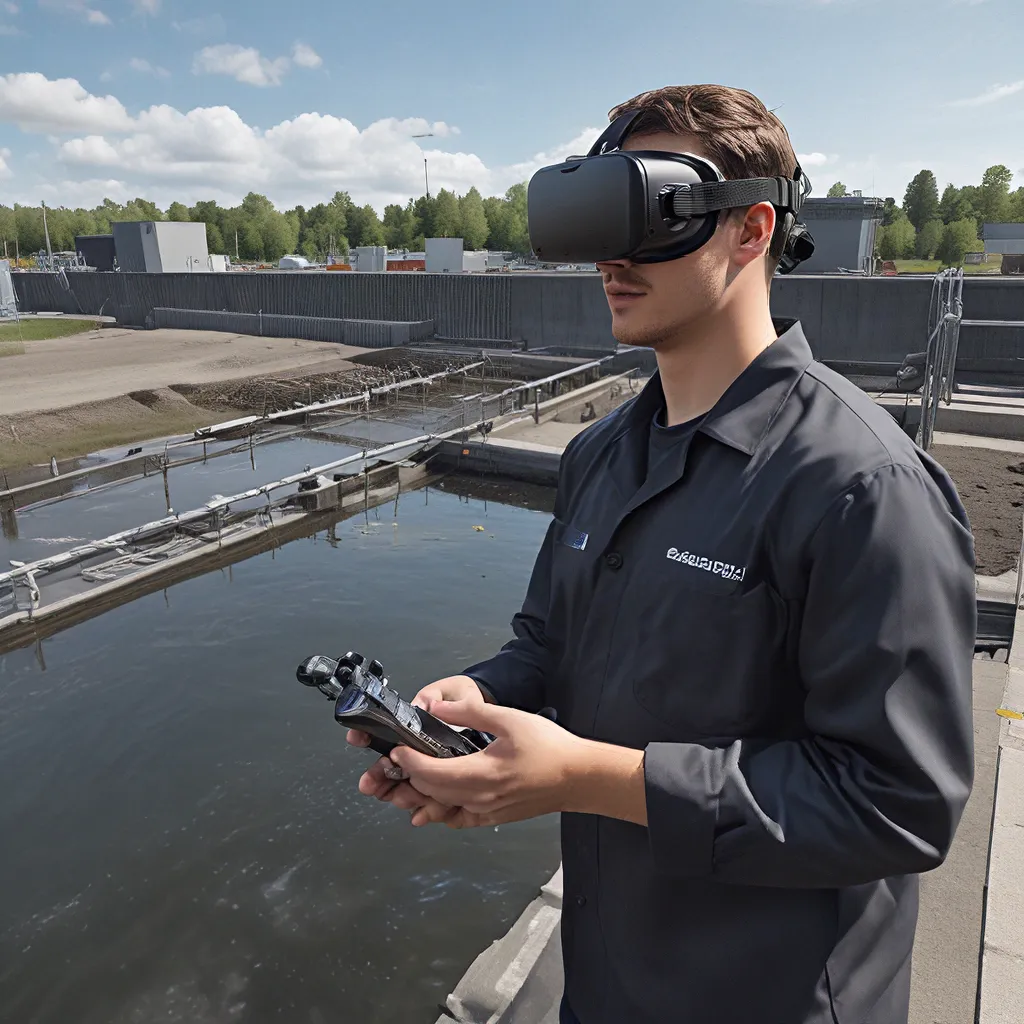
Unlocking the Power of VR for Wastewater Operators
As a wastewater treatment professional, I’ve seen firsthand the importance of having a well-trained and competent workforce. After all, the decisions and actions of our operators can have a direct impact on the health of our waterways, the safety of our communities, and the bottom line of our businesses. That’s why I’m excited to share with you how virtual reality (VR) is revolutionizing the way we approach operator training in the wastewater industry.
In an era where the demand for skilled workers is outpacing the supply, organizations like Alpha Wastewater are turning to cutting-edge technologies like VR to bridge the talent gap and ensure our operators are better prepared than ever before. And let me tell you, the results have been nothing short of remarkable.
Immersive Learning: The Key to Operator Competence
Picture this: a new hire steps into a VR headset and is instantly transported to the heart of a wastewater treatment plant. They can see the tanks, the pipes, the valves – everything is there, just as it would be in the real world. But the best part? They can interact with it all, making adjustments, troubleshooting issues, and practicing critical procedures without ever setting foot in the actual facility.
This is the power of Mimic Field 3D, a VR-based training solution developed by industry leader Emerson. By providing personnel with a simulated hands-on experience, this innovative technology allows them to gain a deep understanding of how changes in the field impact the overall process – all while keeping them safe from the potential hazards of the real plant.
As Jim Nyquist, group president of systems and solutions at Emerson, put it, “**Our industry will become increasingly reliant on VR tools like these to address the growing skills gap and improve training effectiveness.**” And I couldn’t agree more.
Bridging the Skills Gap with VR
One of the most pressing challenges facing the wastewater industry is the widening skills gap. As veteran operators retire, we’re struggling to find and train the next generation of professionals to fill their shoes. And with experts estimating that there will be more than 25 million skilled jobs that go unfilled in the United States in the coming decade, the need for innovative solutions has never been greater.
That’s where VR-based training shines. By providing hands-on experience in a safe, controlled environment, we can accelerate the learning process and ensure our operators are better prepared to handle the demands of the job. And as an added bonus, VR training can be tailored to the specific needs and challenges of each facility, ensuring that our people are equipped to handle the unique situations they’ll encounter in the field.
Enhancing Safety and Operational Performance
But the benefits of VR-based training go beyond just bridging the skills gap. It also plays a crucial role in enhancing the safety and overall operational performance of our wastewater treatment plants.
Think about it – how many times have you had to send a new hire or trainee into a potentially hazardous area of the facility, knowing that they’re not yet fully prepared to handle the risks? With VR, we can give them the opportunity to practice proper procedures and make critical decisions in a risk-free environment, before ever setting foot in the actual plant.
And it’s not just about keeping our people safe. By giving operators the chance to learn from each immersive experience, we’re also improving the efficiency and reliability of our operations. After all, when our people are better trained and more confident in their abilities, they’re able to make faster, more informed decisions that can have a direct impact on key performance metrics like cycle times, recovery from incidents, and overall operational performance.
The Future of Wastewater Training: Cloud-Based VR
But the innovation doesn’t stop there. As the world becomes increasingly connected, cloud-based VR solutions are emerging as the next frontier in operator training. By hosting these powerful simulations on the cloud, we can provide geographically diverse teams of trainees with affordable access to the latest VR technologies, regardless of their location.
Imagine being able to train your entire workforce on the latest processes and procedures, without the need for costly on-site equipment or travel. It’s a vision that’s quickly becoming a reality, thanks to the convergence of cloud computing, distributed resources, and connected devices.
And as we continue to explore the possibilities of this technology, I have no doubt that we’ll uncover even more ways to enhance the effectiveness of our training programs and improve the overall competence of our wastewater operators. After all, the future of our industry depends on it.
Embracing the VR Revolution
So, there you have it – the exciting world of VR-based training for wastewater treatment operators. From immersive simulations that prepare our people for the challenges of the real world, to cloud-based solutions that make cutting-edge technology accessible to all, this is a revolution that’s just getting started.
And as for me, I’m all in. I’ve seen firsthand the transformative power of these technologies, and I’m thrilled to be a part of the journey as we redefine the way we train and develop our most valuable asset – our people.
So, what are you waiting for? Embrace the VR revolution and take your wastewater treatment operations to new heights. The future is here, and it’s waiting for us to dive in.